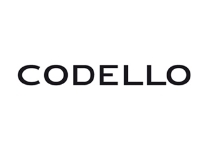Codello
Accessories / Bags
In the 1920s the company founder Rinaldo CODELLO came from the Italian city of Turin to Munich with a love and passion for fashion and a vision. He combined the traditional, complex craftsmanship o...
In the 1920s the company founder Rinaldo CODELLO came from the Italian city of Turin to Munich with a love and passion for fashion and a vision. He combined the traditional, complex craftsmanship of Italian foulard printing with inspirations he gathered on his travels to faraway lands. This provided the basis for his first foulard collection, which he ultimately presented under the name “CODELLO”.He used different classical prints, patched in a new way and printed it in a strong colour composition on silk. On this basis he developed his distinctive handwriting and his unmistakable style. In the 1980s the company was handed over to the family Schnabl. The typical “CODELLO” motifs printed on foulards and scarves continue to be the trademark of the family business, which is now being run by second-generation family members. The collection pieces are predominantly drawn and made by hand. They are developed by the creative team of Miriam and Michael Schnabl. An infinite world of new and fantastic images is thus created, which captures the spirit of our time yet outlast trends. Our vision remains the same: to tell interesting stories, stir up emotions and light up the eyes of the wearer with “CODELLO” scarves and foulards.Brand Details
Founder
Rinaldo CODELLO
Brand Strategy
Market segment
Mass Market
Core business
Accessories
Targets
Men, Women
Codello Financial Report 2024
Last fiscal year ended on December 31, 2012
